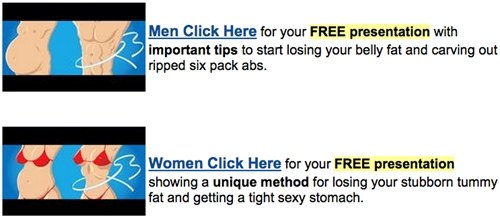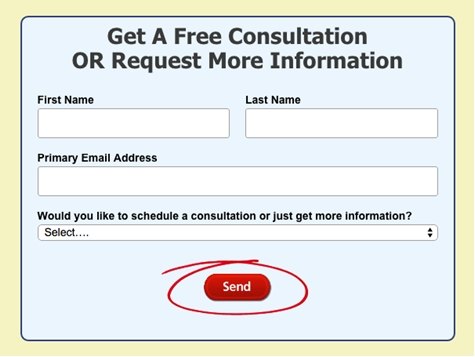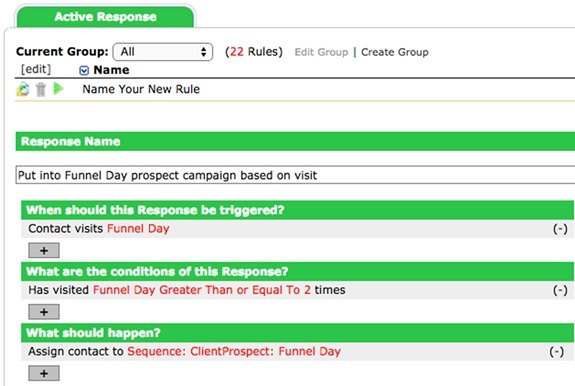Most email marketing campaigns do a lousy job of turning warm leads into new customers or clients.
There are countless ways to increase the results you get from email marketing. This article focuses on list segmentation, which dramatically increases your results and does so without annoying your prospects.
You've heard about segmenting based on buyers vs. prospects, warm vs. cold leads, and so on. Those are OK, but they're not going to give you the dramatic increases you're probably looking for. Instead, I'd like to show you how to use your email marketing platform to segment your audience based on the actual interests of your prospects.
So let's get to it with...
Tactic No. 1: Within Your Welcome Email
After every major email campaign, you should have some sort of "welcome" email explaining who you are, why those who have signed up are getting an email from you, and, of course, what you're going to do to help them.
Most welcome emails are boring—and, frankly, pointless.
The average welcome email does nothing but say "thank you" and confirm that the person is now part of the list and will be getting regular updates.
Please don't do that.
Remember, this is your first big impression! And it's your best chance to begin segmenting your list.
Here's what to do.
First, explain who you are and why they are getting an email from you. Then, explain what you do for people and whom you can help. Finally, ask them to do you a favor by letting you know what they're most interested in learning about.
Here's a sample template you can use. Make sure to replace any parts in brackets with your own information.
Hi, my name is [Jeremy Reeves] and I just wanted to quickly thank you for [requesting your free guide to shedding 7 strokes from your golf game in the next 30 days].
I help [men over the age of 40 lower their golf scores by teaching you how to find and exploit your natural strengths while minimizing your weaknesses].
If that sounds like something you're trying to achieve, I think we'll get along just fine.
However, before I can help you, I have a really quick favor.
I want to make sure I'm sending you content that's relevant to helping you achieve your #1 goal. To make that happen, I want to send you something that will give you an instant improvement in the next 24 hours. Click ONE of the links below so I can send you to the correct video...
- [My #1 weakness is keeping my drives straight.]
- [My #1 weakness are my approach shots.]
- [My #1 weakness is putting.]
Thanks in advance. Can't wait to hear how it works for you.
[Signature]
When you segment people based on the No. 1 problem they're having, and show them how to overcome that very specific problem, it builds instant trust and credibility.
You might be able to do it with a general campaign, but by the time you send an email talking about that No. 1 specific problem they're having, it might be too late.
When I used this approach for a client of mine named Pat, we split it up into three segments. Each email segment got a total of 10 emails about overcoming that No. 1 problem the recipients were having, then they went into a more general list.
That was the No. 1 strategy that helped us improve his overall results from that campaign by 270%.
But that's not the only way to segment your list based on interests.
Tactic No. 2: On the Opt-in Form Itself
Sometimes, it makes sense to segment your prospects before they even join your email list.
Let's say, for example, you're selling some sort of weight loss product. Maybe you have a free report talking about your top 7 secrets to losing weight.
Do you think it might be worthwhile to segment your users based on gender? After all, men and women think very differently about how they want to lose weight. They have different frustrations, and different goals. They want different things. They think in different ways.
If this is the case, you can do one of two things:
1. Segment from within your landing page offer. Add a paragraph or two explaining that men and women should take different approaches to lose weight, and that you want to them to select whether they're a man or a woman so you know which report to send them.
Mike Geary from TruthAboutAbs does this well, and he does so before sending them to his sales video. Here's a picture showing you how he does it (notice the differences in copy in the second and third lines):

2. Segment from within your opt-in form. Have visitors answer a question right on your opt-in form to tell you how to classify them. For example, I ask people who are on one of my services pages whether they are there to request a consultation with me or to get more information first. (I realized a lot of people aren't quite ready to actually talk on the phone, but they are ready for more information about how I might be able to help them.) I then follow up with email sequences that are in place for each option.

When I implemented this tactic, I doubled my overall leads, increased free consultations by roughly 30%, and increased my product sales as well.
Tactic No. 3: Based On Website Pages They Visited
Another way to segment is based on visitors' actual website behavior. Let's say someone joins your list because of a free webinar you offered. At that point, you really have little idea what they're interested in, so it's a bit of a guess.

If you're using a platform like HubSpot, Ontraport (see above image), or Infusionsoft (and you should be!), you can place tracking links on your page that tell you when visitors visit a certain page. Then you can segment them based on the pages they visited.
So, let's say that you sell a weight-loss product but also have a weight-loss coaching service. Someone joins your list to find out about your product. Then they happen to take a look at your coaching service page, twice. Think they might be interested in that service? I'd say so.
You can automatically put them into a separate campaign that tells them more about that service at the exact moment they are the most interested in it.
Where to Go From Here
As you can see, the purpose here is to figure out exactly what each person on your email list is interested in learning about, then customizing your email marketing specifically to that interest. You are able to simultaneously send them less about what they don't care about and more about exactly what they're interested in.
Plus, it can all be done on autopilot so you don't have to manually tag new people every time they fill out a form, which would be a grueling process.
It's not for everyone. If you're just starting out, you don't need to get this advanced. But if you're looking to take things to the next level or you have a focus on building your email list (which you should),it's worth the time and effort to implement campaigns like this.
Let me know what you think. Feel free to leave comments and let me know whether this article helped you and if you have any questions




